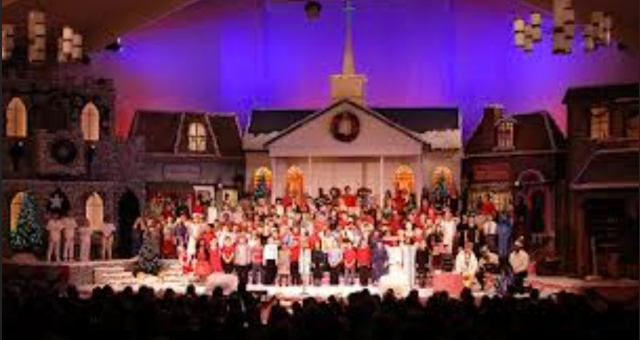One of the joys of the holiday season is to watch your favorite Christmas movies with your family. Here are my favorites. I could watch them every year. What are yours? Have a blessed Christmas!
Home Alone – (1990) Home Alone is the highly successful and beloved family comedy about a young boy named Kevin (Macaulay Culkin) who is accidentally left behind when his family takes off for a vacation in France over the holiday season. Once he realizes they’ve left him home alone, he learns to fend for himself and, eventually has to protect his house against two bumbling burglars (Joe Pesci, Daniel Stern) who are planning to rob every house in Kevin’s suburban Chicago neighborhood. Though the film’s slapstick ending may be somewhat violent, Culkin’s charming presence helped the film become one of the most successful ever at the time of its release.~ Stephen Thomas Erlewine, All Movie Guide
Home Alone 2: Lost In New York – (1992) After snarky youth Kevin McCallister (Macaulay Culkin) loses track of his father at the airport, he mistakenly gets on a plane headed for New York City — while the rest of the McCallisters fly to Florida. Now alone in the Big Apple, Kevin cons his way into a room at the Plaza Hotel and begins his usual antics. But when Kevin discovers that the Sticky Bandits (Joe Pesci, Daniel Stern) are on the loose, he struggles to stop them from robbing an elderly man’s toy store just before Christmas.
Elf – (2003) As a baby, Buddy crawls into Santa’s toy bag and is whisked off to the North Pole, where he is raised as an elf. A misfit who grows to be three times the size of his elf family, Buddy ultimately heads to his birthplace of New York City to seek out his roots. Unfortunately, they turn out to be a “Scrooge”-like father and a cynical ten-year-old stepbrother who doesn’t believe in Santa. Worst of all, everyone seems to have forgotten the true meaning of Christmas. But using his simple elf ways, Buddy sets out to single-handedly win over his family and save Christmas in New York, hoping to at last find his true place in the world.
Miracle on 34th Street – (1994) The 1947 holiday classic Miracle on 34th Street is transplanted to the 1990s with few changes in this family oriented remake. The screenplay by the prolific John Hughes sticks close to the original outline, centering on Macy’s executive Dorey Walker (Elizabeth Perkins) and her young daughter Susan (Mara Wilson), neither of whom much believes in the spirit of Christmas. Dorey is in charge of hiring Macy’s Santas, including an old man named Kriss Kringle (Richard Attenborough). He does a remarkably convincing job, and he soon reveals that he actually believes himself to be Santa Claus. The authorities threaten to place the old man in an insane asylum, but a young lawyer comes to his defense. Meanwhile, Dorey and Susan find their own defenses melting and become reacquainted with the power of faith. Hughes and director Les Mayfield add a few modern touches, making Susan slightly more cynical and adding the requisite soulless corporate villains. Viewers familiar with the original may still prefer Edmund Gwenn’s original Kris Kringle and consider the remake unnecessary, although the newer version reflects enough of the earlier film’s spirit to prove entertaining to modern family audiences. ~ Judd Blaise, Rovi
A Christmas Story – (1983) Based on the humorous writings of author Jean Shepherd, this beloved holiday movie follows the wintry exploits of youngster Ralphie Parker (Peter Billingsley), who spends most of his time dodging a bully (Zack Ward) and dreaming of his ideal Christmas gift, a “Red Ryder air rifle.” Frequently at odds with his cranky dad (Darren McGavin) but comforted by his doting mother (Melinda Dillon), Ralphie struggles to make it to Christmas Day with his glasses and his hopes intact.
The Nativity Story – (2006) Betrothed to much-older Joseph (Oscar Isaac), Mary (Keisha Castle-Hughes) must remain a maiden for one year, but she subsequently receives a visit from the angel Gabriel, who tells her of her destiny. When Joseph and now-heavily pregnant Mary journey to Bethlehem for the Roman census, they face a threat from King Herod, whose obsession with an ancient prophecy endangers soon-to-be-born Jesus.
It’s A Wonderful Life – (1946) After George Bailey (James Stewart) wishes he had never been born, an angel (Henry Travers) is sent to earth to make George’s wish come true. George starts to realize how many lives he has changed and impacted, and how they would be different if he was never there.
The Preacher’s Wife – (1996) In this upbeat, sentimental remake of The Bishop’s Wife (1947), Reverend Henry Biggs struggles to keep his church afloat. When Biggs prays for help and guidance, the Heavenly Reply comes in the form of handsome Dudley. However, trouble brews when Dudley falls in love with Henry’s beautiful, neglected wife.





















